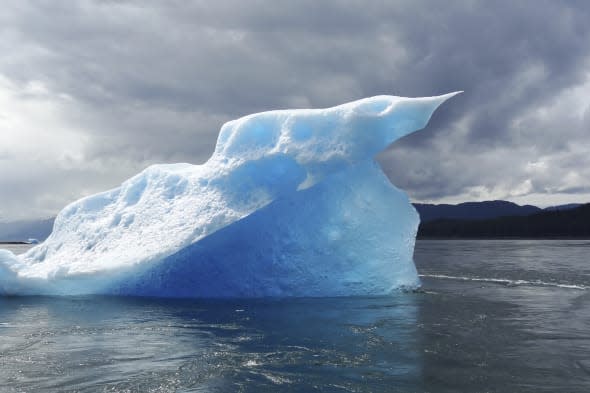Arctic icebergs a "bigger threat today" than for the Titanic

Icebergs in the Arctic are more of a danger to ships today than they were when the Titanic sank a century ago with the loss of 1,517 lives, say scientists.
Experts dispelled a theory that the ill-fated liner was unlucky because its maiden voyage took place in a year with an exceptional number of icebergs. Source: PA
It had been thought that strong tides caused by an unusual aspect of the sun and moon may have dislodged stranded icebergs and moved them into the shipping lanes. But information on iceberg locations dating back to 1913 - recorded to help prevent a repeat of the disaster - shows that 1912 was not an extreme year for icebergs.
Lead scientist Professor Grant Bigg, from the University of Sheffield, said: "We have seen that 1912 was a year of raised iceberg hazard, but not exceptionally so in the long term.
"The year 1909 recorded a slightly higher number of icebergs and more recently the risk has been much greater - between 1991 and 2000, eight of the 10 years recorded more than 700 icebergs and five exceeded the 1912 total."
He added that the danger of ice in the Arctic was likely to increase as warming temperatures caused sea ice to melt and fragment.
"As use of the Arctic, in particular, increases in the future with the declining sea-ice the ice hazard will increase in water not previously used for shipping," said Prof Bigg.
"As polar ice sheets are increasingly losing mass as well, the iceberg risk is likely to increase in the future, rather than decline."
The Titanic set off on her first and last voyage from Southampton to New York 102 years ago yesterday.
At 11.40pm on April 14, 1912, the ship's lookout sounded the alarm and telephoned the bridge saying: "Iceberg, right ahead."
The warning came too late and Titanic struck the iceberg less than 40 seconds later, tearing holes along the side of her hull.
Less than three hours later, the vessel lay at the bottom of the Atlantic ocean.
The new research is published in the journal Weather.
Related articles
World's richest man builds Titanic replica
Experts dispute Titanic iceberg theory





